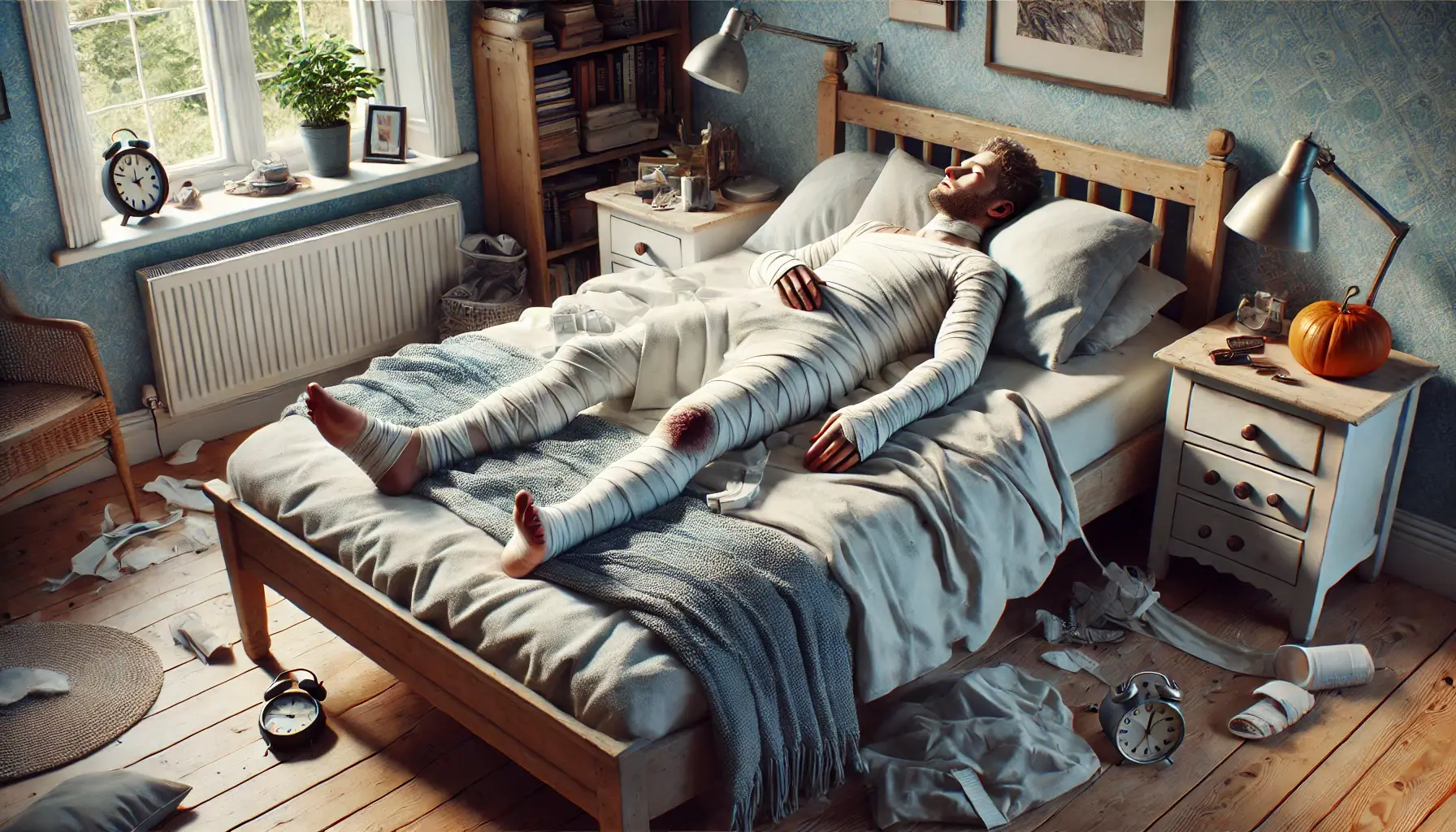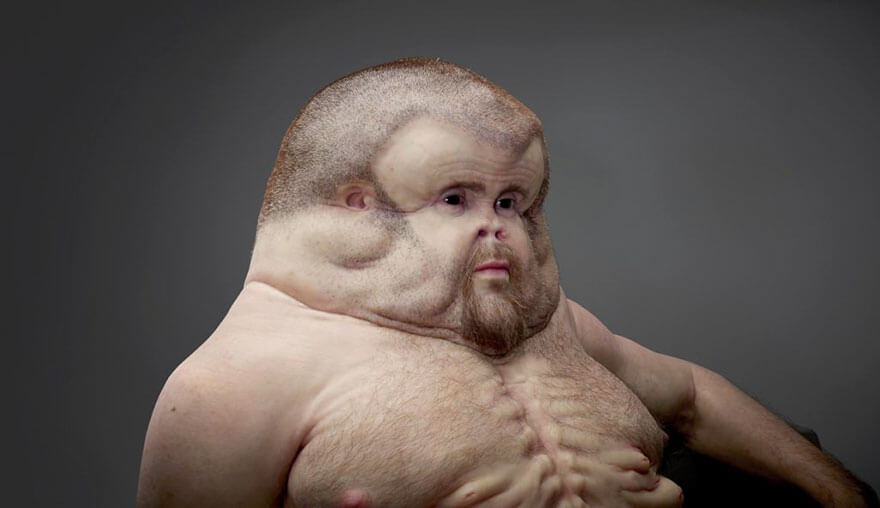Meet Graham – The Human Evolution Of Car Accident Survival
Cutting edge technology is being used in Australia to demonstrate just how vulnerable humans are to the collision forces caused by an auto accident. Victoria, Australia, has become known for its dramatic road safety campaigns. Now, the Transport Accident Commission has partnered with a leading trauma surgeon, a crash investigation expert, and a notable Melbourne artist to produce Graham. Graham is “an interactive lifelike sculpture demonstrating human vulnerability.”
Graham is much more than a sculpture, however Graham has been designed with features that might have been present in humans if we had evolved to withstand the forces of a brutal vehicle collision. Humans evolved long before cars were invented. Our bodies are not designed to handle the strong forces created by a clash between two massive, powerful vehicles. By sculpting a model of how humans would have evolved to withstand such forces, the Victorian government hopes to show just how vulnerable we are while on the road.
In addition to interacting with Graham online, the public can also use Google Tango (a comprehensive augmented reality technology) to better understand Graham’s features, and how they would protect him in a collision. The Victorian government has also produced educational guides and school curriculum for students who study Graham.
Graham is a dramatic departure from standard human features. By merely looking at the photos, one can see how different he is from current human development. It is a stark reminder of the fact that currently, humans are woefully unprepared to withstand the forces of a car accident. This is why so many accidents are fatal.
Just How Low Is Human Tolerance For Collisions?
To fully comprehend just how vulnerable we are in collisions, it is helpful to look at fatality rates based on speed. The meet Graham Project reports that speeds as low as 19 miles per hour can be fatal without any protection. This is why pedestrians are so vulnerable to injuries, and why pedestrian injuries are so much more likely to be fatal. They have no protection from the force of a collision. Unlike vehicle occupants, who are protected by airbags and seatbelts, pedestrians are subject to the full force of a heavy steel vehicle crashing into their bodies.
As speeds increase, the chance of a fatal income for an unprotected victim can reach 100 percent. For pedestrians, this occurs around 37 miles per hour. In a side-on collision, this occurs around 50 miles per hour. And in a head on collision, this occurs around 62 miles per hour.
We have made great progress in implementing safety measures that reduce these numbers significantly. Many auto accident victims are able to survive collisions that occur at speeds of 60 miles per hour or even higher. This is largely due to enhanced steel vehicle frames, airbags and seatbelts. The next generation of safety features like automatic braking, backup cameras and lane drifting warnings will likely show even more progress in reducing accident fatality rates. But we must always remember that these are merely safety tools. Ultimately, we are vulnerable humans whose bodies are woefully unprepared to withstand the trauma of a vehicle collision.
The Features That Protect Graham In An Auto Accident
- Graham’s Brain – The brain is one of the most vulnerable parts of the human body. In a car accident, the skull protects the brain from collisions with outside forces. But the brain can be injured by hitting the skull itself. In fact, most collisions cause the brain to hit the skull twice – first in the front, and then it is forced to the back of the skull by the force of that first collision. To combat this problem, Graham has been designed with more cerebrospinal fluid and ligaments in his skull. His brain is the same size as ours, but it has more cushion and protection from the force of a collision. This is why Graham’s head is so dramatically oversized.
- Graham’s Skull – Graham’s skull is designed to fracture. This is how helmets work: by absorbing the impact of a collision, the force is used to crack the helmet and diverted away from the brain. Graham’s skull is bigger than ours. It also has built-in “crumple zones” that are designed to break. Much like a helmet, Graham’s skull diverts the force of the collision away from his brain.
- Graham’s Face – Graham has a flat, sunken face. This is designed to protect the small, delicate facial bones from the force of a collision with a steering wheel or windshield. Our noses protrude, and this makes them likely to be broken in a car accident. Broken noses frequently interfere with sinuses and other delicate facial areas. Graham has extra fat tissue around the protruding areas (such as cheekbones) in order to protect these bones from fracturing further. This sunken face – together with his dramatically oversized head – give Graham a startling, thumb-like appearance.
- Graham’s Neck – The neck is another highly vulnerable area. A car accident subjects it to forces that the structure is not designed to take. This is why so many auto accident victims suffer whiplash and other neck injuries. To make the problem worse, the neck houses the spinal cord – one of the most sensitive and vital structures of the entire human body. This is why trauma often leads to paraplegia and quadriplegia. To combat this problem, Graham has no neck at all. (This, too, adds to his thumb-like appearance.) His ribs extend all the way up to his skull to further enhance the support structure. In a real human, this design would limit mobility and prevent one from turning their head. For Graham, this is simply another level of protection that makes him better able to withstand a car crash.
- Graham’s Rib Cage – Our human rib cages are one of the best forms of defense we have. They protect many vital organs (including the heart and lungs) from the forces of a collision. Graham’s ribs have been strengthened, but his rib cage is structured much like ours. He has a large, barrel-like chest to withstand a collision better. He also has sacks between each of his ribs. These act as airbags: they absorb the force of a collision and prevent forward momentum. They also add yet another layer of protection for the heart and other vital organs.
- Graham’s Skin – Cuts and abrasions are usually the least severe injuries a victim experiences in a car accident. They can, however, cause other complications, such as exposed nerves. This can lead to lasting nerve damage that can cause a loss of function or pain. This was an easy fix – Graham was given skin that is thicker and tougher. The arms, hands, and elbows were further reinforced. These areas are often outstretched in a collision and are the most likely to sustain cuts, bruises, and road rash.
- Graham’s Knees – Human knees bend in only one direction. This makes it more likely that a pedestrian will break his or her knee after being struck by a car. Graham’s knees allow for movement in every direction. They are reinforced with extra tendons, which adds flexibility, and reduces the likelihood of a fracture.
- Graham’s Legs and Feet – Human legs are also vulnerable in a collision. The shinbone is the most exposed in the entire body – it has only a thin layer of skin covering it. Graham has an extra joint in his lower leg that allows for quick movements. These “spring-loaded” motions are like those of a deer or kangaroo. They allow for a quicker escape from a collision.
Call Us Today To Schedule A Free Case Evaluation
As Graham shows us, the human body is nowhere near strong enough to withstand the forces of a vehicle collision. This is why auto accidents are so painful and devastating for the victims involved. Negligent drivers have a legal obligation to compensate injury victims for the many losses associated with auto accident injuries.
This includes not just lost wages and medical bills, but also pain and suffering, and the loss of enjoyment of life. Unfortunately, insurance companies have tactics and strategies that they use to try and get out of paying a fair settlement offer. At Tompkins Selph & Associates our personal injury attorneys know how to protect you from these tactics. Call (614)-453-0971 today to schedule a free consultation with an experienced Ohio personal injury attorney. We promise to fight hard and ensure that all our accident victims are fully and fairly compensated for the many losses they have suffered.
Sub Categories
Recent Articles
-
 Jul 22, 2024Seasonal Risks Leading to Different Types of Personal Injury Accidents
Jul 22, 2024Seasonal Risks Leading to Different Types of Personal Injury Accidents -
 Jul 22, 2024Common Injuries in Different Personal Injury Cases
Jul 22, 2024Common Injuries in Different Personal Injury Cases -
 Jul 22, 2024Maximizing Compensation in Personal Injury Accident Cases
Jul 22, 2024Maximizing Compensation in Personal Injury Accident Cases -
 Jul 22, 2024Unnatural Provable Negligence in Slip and Fall Cases
Jul 22, 2024Unnatural Provable Negligence in Slip and Fall Cases

